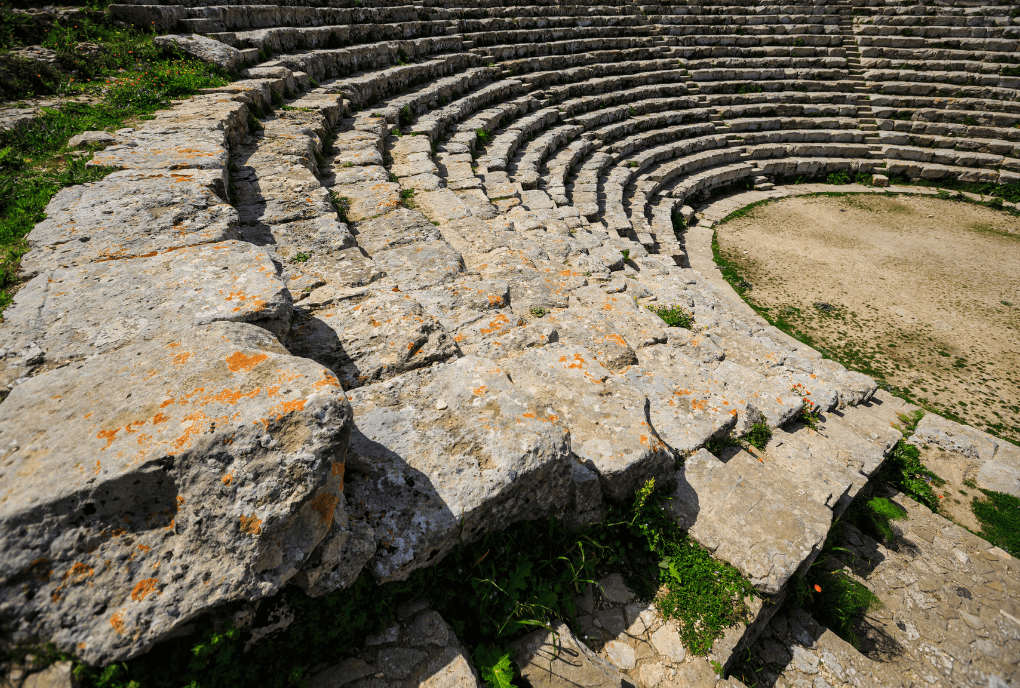
The Segesta Archaeological Park: a journey through the ancient city of the Elymians
Sicily is a journey through time among legends of peoples and cultures. L’ancient city of Segesta is the star of this magical itinerary. Among its ruins hides the secrets of a land of millennia-old origins, which has its roots in classical history.
The history of Segesta: from the Elymians to the Normans
Segesta was the most important city of the Elymians. According to legend it was founded in the 11th century B.C. by refugees from Troy led by Aeneas. It is said that the Greek hero left his old father right here before arriving in Rome.
The links between Sicily, the Elymian world and some areas of Asia Minor.. Reason why even today the numerous monuments in the archaeological park are under study. One thing is certain, more than a thousand years ago these lands experienced a refined people, well opposed to the domination of the Sicelian Greeks and often in conflict with the ancient city of Selinunte.
The Elymians were in the habit of establishing well-aligned alliances. This ensured that the colony could impose itself on numerous attacks and reach theapex of its power. In fact, history speaks of friendly relations with the Punics and later with the Romans. Despite alliances, unfortunately, it was conquered in 409 BC by the Carthaginians and in 307 BC. Segesta was destroyed by the tyrant Agathocles of Syracuse., taking the name Diceopolis. During the first Punic War (264-241 BC) it became a Roman colony and, thanks to the coalition with Rome, was recognized for its common Trojan origins and exempted from paying tribute. In addition, they were granted no small amount of political and territorial autonomy. And it is precisely in talking about the area that the two most important monuments in the park come to mind: The Temple and the Theater.
The Temple of Segesta, the contrast with Greek culture.
That of Segesta is a Doric type temple composed of six columns in width and fourteen in length. It stands in a detached location from the Agora, placed on a hill and clearly visible even from a distance. Its structure, stated as unfinished, has caused discussion among scholars and ancient history enthusiasts.
A source of mystery is the lack of an inner cell (adyton) and its extreme resemblance to a Greek building. This although there was a substantial cultural difference between Elymians and Hellenes.
So two hypotheses resulted from the studies:
- The first tells us that it was specially constructed with Greek technical and stylistic features for a Greek cult and remained incomplete of the cell.
- The second suggests a copy of the nearby temple of Selinunte (read also “The temples of Agrigento…“), and thus the construction of a showy building of neoclassical open-air architecture, adapted to an Elymian cult.
We know that it was built around the fifth century B.C. and accompanied the city for better or worse without suffering any particular damage. Over the centuries it has become an integral part of the landscape and to this day remains one of the most iconic archaeological areas in Sicily.
From ancient history to the Middle Ages: the wonder of the Theater of Segesta and the Castle of Monte Barbaro
The Ancient Theater of Segesta Is a work of commendable workmanship. His strategic location opens the scenery not only in the direction of the stage plan, but also to the wonderful panorama of the Sicani Mountains. Built with a local limestone, it too features the typical Greek architecture. The structure of the theater is supported by a massive retaining wall called anàlemma.

Its capacity was determined by a cavea large enough to accommodate as many as four thousand spectators. The stands, equipped with seats with backs, were made vertically on six ladders forming seven wedges of similar size. It was also provided with a Water tank for refreshment of actors and spectators.
During the early years of Roman rule the structure underwent changes. The first row of seats was eliminated., enlarging the stage and allowing more space for the orchestra. The latter entered the complex by taking advantage of side entrances called “pàrodoi.”
One arrived at the theater by following the pavement that from theAgora reached up to the entrances of the same building. È precisely from here that we discover the existence of a medieval segestan age. Researchers have found the remains of a Muslim population dating from between the 12th and 13th centuries.
Testifying to this is the Calatabarbaro Castle, on Mount Barbaro, the highest point in the entire park. Archaeological excavations between 1989 and 1995 unearthed the few Remains of a stronghold of Norman origin. The idea that it is developed on two floors, with a height of ten meters and a floor plan consisting of five rooms per floor, suggests a stately home inhabited during the 1200s and then abandoned.
What to see in Segesta?
The Segesta Archaeological Park with its 270 hectares is located in the province of Trapani, a few kilometers from Calatafimi. Its routes, to be taken on foot, lead tourists to discover the ancient city of Segesta. The park map consists of the following attractions:
- The Doric Temple.
- La Valley Gate, as well as the lower defensive wall.
- La Tower and the Rock House dating from the Augustan period.
- L’Agora with the market (Macellum) and the ruins of the mosque of the Muslim community settled on Mount Barbaro.
- The Castle of Calatabarbaro.
- The Ancient Theater.
- La Church of St. Leo, a small rural chapel frequented by local shepherds until the 16th century.
- La Necropolis near the entrance to the archaeological site and the Contrada Mango Sanctuary
detached from the rest of the itinerary and visitable only by reservation.
How to visit Segesta?
The branching of the paths and the arrangement of the attractions allows the tourist to make the visit in complete autonomy or via shuttles at a cost of €1.50. The full ticket price is €6, the reduced for the age group 18 e 25 years old costs €3. Minors of 18 years old enter free of charge. Tickets can also be purchased online at the following link (Segesta tickets online)
The park follows these opening hours:
- January 1 – February 28 from 9 a.m. to 5 p.m.
- March 1 – March 30 from 9 a.m. to 6:30 p.m.
- March 31-September 30 from 9 a.m. to 7:30 p.m.
- Oct. 1-Oct. 26 from 9 a.m. to 6:30 p.m.
- October 27-December 31 from 9 a.m. to 5 p.m.
L’last entry takes place anhour and a half before the closing of the site.
How to get to Segesta from Palermo? The easiest solution is in car taking about an hour. If you do not have a means it is possible rent a car with Mooway or take advantage of a bus service, with a price ranging between €18 and €28, or even a cab, with rates around €100.
È comfortable clothing is recommended, with sneakers. For those who want to breathe in the essence of the park, it is recommended to choose the off-season, both because of the low attendance and the average lower temperatures.
All that remains is to follow the Segesta Archaeological Park map to enjoy one of the largest and most beautiful archaeological sites in Europe.
Luca Russo






